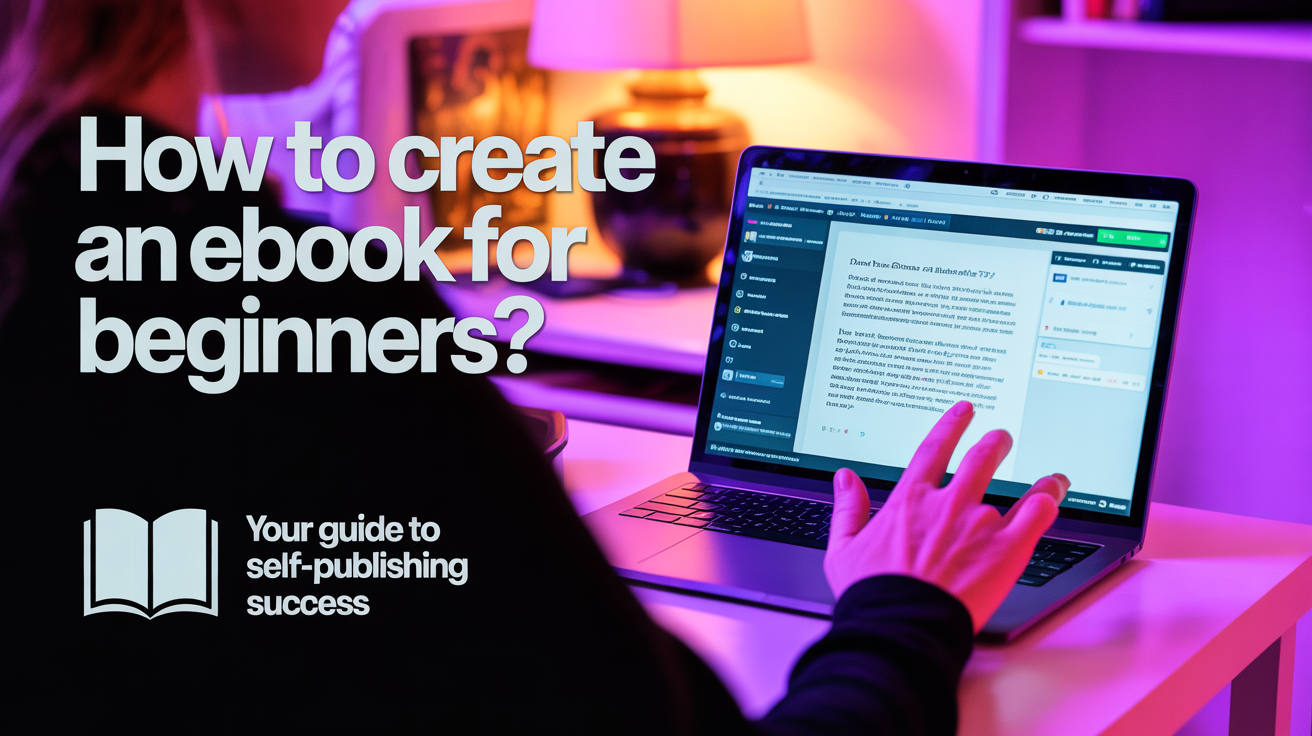How to Create an eBook for Beginners: A Step-by-Step Guide
In today’s digital age, creating an eBook is one of the most effective ways to share your knowledge, establish authority in your niche, or even generate income. Whether you're a blogger, entrepreneur, or hobbyist, producing an eBook might seem daunting if you’re just starting out. However, with the right approach and tools, beginners can craft professional-quality eBooks without the need for advanced technical skills.
This comprehensive guide will walk you through the entire process—from choosing your topic to publishing and promoting your finished product. By following these clear, actionable steps, you’ll be well on your way to creating an eBook that resonates with your audience and achieves your goals.
1. Choose Your Topic
The foundation of any successful eBook is a compelling topic.
Selecting the Right Subject
- Passion and Expertise: Pick a subject you are passionate about or have solid knowledge in. Your enthusiasm will translate into engaging content, and your expertise will build reader trust.
- Audience Alignment: Ideally, your topic should align with your existing content or the interests of your target audience. For example, if you run a fitness blog, writing an eBook on nutrition or workout plans might be a great fit.
- Research Demand: Validate your topic by researching what others are writing about and what your audience is searching for. Tools like Google Trends, niche forums, and keyword research can help you identify popular subjects.
Why Research Matters
Even if you consider yourself an expert, thorough research ensures your eBook contains accurate and up-to-date information. It also helps you discover unique angles or insights that can differentiate your eBook from the competition.
2. Plan and Outline Your eBook
Planning is crucial to keep your writing focused and organized.
Brainstorm and Structure
- Brainstorm Ideas: Jot down all ideas, subtopics, and key points related to your chosen subject.
- Create a Detailed Outline: Organize your ideas into logical sections or chapters. Each chapter should cover a specific aspect of the topic, similar to standalone blog posts that connect smoothly.
Tips for Effective Outlining
- Use bullet points or numbered lists to break down chapters into smaller sections.
- Think about the flow—start with foundational concepts, then move to advanced or practical applications.
- Consider including an introduction and conclusion to frame your eBook.
3. Write the Content
Now it’s time to bring your outline to life with engaging, valuable content.
Writing Best Practices
- Focus on Clarity: Write in a clear, concise manner. Avoid jargon unless it’s necessary and explained well.
- Be Comprehensive: Don’t worry about length—cover your topic thoroughly. Your eBook could be anywhere from 5 to 30 pages or more, depending on the subject.
- Engage Your Readers: Use examples, anecdotes, and actionable tips to make your content relatable.
- Edit and Proofread: After your first draft, revise for clarity, grammar, and flow. Consider getting feedback from friends or using tools like Grammarly for polishing.
4. Design and Format Your eBook
A visually appealing and easy-to-read eBook greatly enhances the reader experience.
Choosing the Right Tools
- Canva: A beginner-friendly design tool with customizable eBook templates and cover designs.
- Google Docs or Microsoft Word: Great for writing and basic formatting such as headings, bullet points, and images.
Design Tips
- Cover Design: Create a strong, eye-catching cover as it’s the first thing potential readers see.
- Layout: Use consistent fonts, appropriate spacing, and clear headings to improve readability.
- Images and Graphics: Incorporate relevant visuals to break up text and illustrate points.
- Format: Ensure your eBook looks professional and polished before moving to publishing.
5. Convert and Publish Your eBook
Once your eBook is written and designed, it’s time to get it into the hands of readers.
Exporting Your eBook
- Export your file as a PDF, which is widely accepted and preserves your formatting across devices.
Publishing Platforms
- Amazon Kindle Direct Publishing (KDP): A popular platform that guides you through uploading your eBook, setting prices, and reaching a global audience.
- Your Website or Email List: You can distribute your eBook directly to your audience, either for free or as a paid download.
- Other Marketplaces: Consider platforms like Gumroad or Smashwords for additional reach.
6. Promote Your eBook
Publishing is just the beginning—promoting your eBook is essential to gain visibility and downloads.
Promotion Strategies
- Social Media: Share posts, stories, or videos about your eBook launch on platforms where your audience hangs out.
- Email Marketing: Send announcements or exclusive offers to your subscribers.
- Free Samples: Offer a free chapter or excerpt to entice readers and build trust.
- Run Promotions: Discounts, giveaways, or bundle offers can generate buzz and increase sales.
Recommended Free Tools for Beginners
| Step | Recommended Tools | Purpose |
|---|---|---|
| Choose Topic | Google, Niche Forums | Research and validation |
| Plan & Outline | Google Docs, Microsoft Word | Writing and organizing content |
| Write Content | Google Docs, Microsoft Word | Drafting and editing |
| Design & Format | Canva, Google Docs | Cover design and formatting |
| Convert & Publish | Canva, Amazon KDP | Exporting and publishing |
| Promote | Social Media, Email Marketing | Marketing and distribution |
Conclusion
Creating an eBook as a beginner might seem complex, but by breaking it down into manageable steps, you can produce a professional and valuable digital product. Start by selecting a topic you care about, plan your content carefully, write clearly, and pay attention to design and formatting. Finally, choose the right platforms to publish and promote your eBook to reach your audience effectively.
With dedication and the right tools, your eBook can become a powerful asset—whether for building your brand, sharing your expertise, or generating income. Take the first step today and start turning your ideas into a well-crafted eBook!
Actionable Takeaway: Begin by outlining your eBook today. Even a simple list of chapters will give you clarity and momentum to keep moving forward. Remember, every great eBook starts with a solid plan!
Ready to create stunning, high-quality ebooks faster than ever? 🚀 BookBlitz AI Ebook Generator harnesses the power of the latest AI technology—featuring OpenAI’s GPT-4.1 for text generation and Ideogram v3 Turbo for eye-catching, professional book covers.
Generate ebooks in any language, perfectly tailored with genre, audience, and style suggestions. Plus, unlock the Topic Generator—instantly generate 200 bestselling book titles in the top 10 profitable subniches for your chosen topic.
Join thousands of authors and creators who trust BookBlitzAI to simplify ebook publishing and boost their success.
Start your free trial now and turn your ideas into profits today! 👉 Explore BookBlitzAI.com
Your next bestseller is just a click away.



